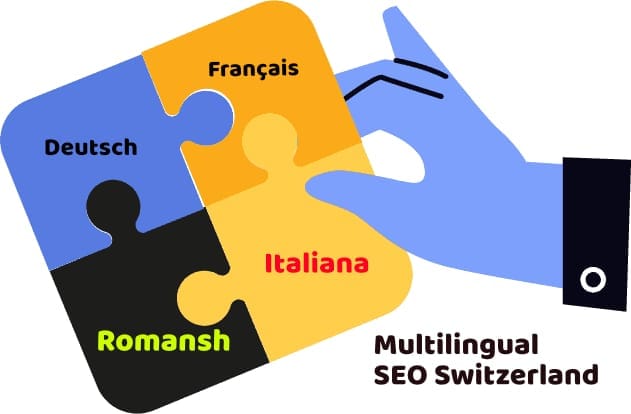In today’s fast-paced digital world, every millisecond counts. When your Swiss audience in Zurich, Geneva, or Basel clicks your site, they expect near-instant page loads. If your pages lag even slightly, visitors bounce, conversions plummet, and search rankings suffer. Fortunately, by applying hyper-local page-speed optimization strategies tailored specifically for Switzerland’s top business hubs, you can delight users, outperform competitors, and secure top positions in Google Search.
This comprehensive guide outlines actionable steps that developers and SEO specialists can implement right away. You’ll learn how to analyze local network conditions, choose optimal hosting and CDN strategies, fine-tune assets, and leverage modern protocols—all to deliver blazing-fast experiences under one second.
1. Understand Swiss Network Realities
Before tweaking code, grasp the local connectivity landscape. Although Switzerland boasts high average broadband speeds, regional variations exist. Urban centers like Zurich, Geneva, and Basel enjoy fiber-to-the-home and 5G coverage, yet corporate firewalls, mobile throttling, or remote mountain connections can still slow requests.
Therefore, start by gathering accurate data:
- Run speed tests from each city using WebPageTest’s multi-origin feature.
- Analyze Core Web Vitals for local visitors via Google’s Chrome UX Report region filter.
- Survey real users in Swiss offices and remote branches to identify bottlenecks.
By pinpointing where delays occur—be it DNS resolution, TCP handshake, or asset download—you’ll tailor optimizations to local constraints rather than guessing.
2. Choose Hyper-Local Hosting and Edge Delivery
Global CDNs accelerate content worldwide, but for sub-1-second loads in Swiss metros, edge nodes must be as close as possible. Follow these hosting best practices:
- Host on a Swiss data center or near-border region (e.g., Frankfurt with direct fiber links to Swiss cities).
- Leverage a multi-CDN approach. Combine a large global CDN with a specialized Swiss or European edge (e.g., Cloudflare’s Zurich PoP plus Swiss-based SwissCDN).
- Use geolocation routing to direct Zurich users to nearest nodes, Geneva traffic to local caches, and Basel visitors accordingly.
Additionally, enable HTTP/3 and QUIC protocols to reduce handshake overhead on mobile and desktop. These protocols thrive on UDP, delivering faster connections—especially under Swiss peering arrangements.
3. Optimize DNS and SSL Handshakes
Even the fastest server can’t overcome slow DNS lookups or TLS negotiations. To minimize handshake delays:
- Use a premium DNS provider with anycast nodes in Zurich, Geneva, and Basel. Fast DNS resolution shrinks lookup times to under 20 ms.
- Preload HSTS and configure TLS tickets. By caching session parameters on repeat visits, you shave off costly full TLS handshakes.
- Deploy OCSP stapling to avoid extra round-trips for certificate verification. This reduces handshake latency by tens of milliseconds.
Every millisecond saved compounds, bringing you closer to the holy grail of sub-1-second first-content-ful paint.
4. Leverage Critical CSS and Preload Key Resources
Once the connection is optimal, focus on delivering only what’s essential first:
- Critical CSS: Extract and inline above-the-fold styles so the browser can render the initial view without waiting for full CSS downloads. For multilingual Swiss sites, generate separate critical CSS per language to avoid bloating any single page.
- Preload Key Assets: Use
<link rel="preload">for your hero image, essential fonts, and primary JavaScript bundles. Ensure you specifyas="font"oras="image"so the browser prioritizes these downloads. - Font Optimization: Host fonts locally on your Swiss CDN, subset them to include only the characters you need, and use
font-display: swapto prevent invisible text delays.
By prioritizing critical resources, you deliver meaningful content immediately, rather than making users stare at blank screens.
5. Compress and Serve Modern Image Formats
High-quality visuals are vital, but uncompressed images will kill your speed goals. Implement image optimization best practices:
- Convert all images to WebP or AVIF—these formats reduce file sizes by 30–50% compared to JPEG or PNG.
- Automate image resizing on the server side so you never send a larger image than the user’s viewport. For Swiss tablets and mobiles, generate sizes specifically for common screen widths in Zurich’s tech-savvy demographic.
- Employ client-hint CDN features: allow the browser to request the ideal resolution and format via
Accept-CH. - Lazy-load offscreen images using
loading="lazy"but eager-load above-the-fold visuals with appropriate preloading.
Smaller image payloads translate directly into faster page loads, especially for mobile users relying on Swiss LTE or 5G.
6. Minify, Bundle, and Tree-Shake JavaScript
JavaScript bloat is a notorious speed killer. To eliminate unused code and shrink bundles:
- Adopt ES6 module syntax and use Rollup or Webpack’s tree-shaking functionality. Remove code branches not used by Swiss locales if your site features region-specific functionality.
- Split code into smaller chunks with dynamic imports, ensuring that non-critical scripts load only after the main content paints. For instance, defer analytics, chat widgets, or heavy interactive components until after user-visible elements appear.
- Minify JavaScript and CSS using advanced compressors like Terser and CSSNano. Remove all comments and whitespace, and apply dead-code elimination.
When every byte counts, precise bundling ensures only essential scripts reach the browser.
7. Leverage Server-Side Rendering and Caching
Dynamic sites often suffer from slow initial responses. Use server-side rendering (SSR) and caching layers to generate HTML quickly:
- Implement SSR frameworks (Next.js, Nuxt.js) that pre-render pages on the server, delivering fully composed HTML to the user agent.
- Cache HTML at the edge for static pages and purge intelligently on content updates. For high-volume Swiss sites—news portals or e-commerce stores—use stale-while-revalidate strategies so visitors never wait for backend regeneration.
- Employ Redis or Memcached for database query caching, reducing render time for personalized pages like member dashboards or region-filtered catalog views.
By pushing compute to the edge and caching aggressively, you minimize TTFB (time to first byte) under 50 ms.
8. Monitor, Analyze, Iterate
Optimization is an ongoing process, not a one-time sprint. To sustain sub-1-second performance:
- Set up Real User Monitoring (RUM) tools—such as Datadog RUM or SpeedCurve—configured to segment data by Zurich, Geneva, and Basel.
- Track Core Web Vitals in Google Search Console’s Origin Summary, comparing city-level metrics month over month.
- Automate performance budgets in your CI/CD pipeline. Fail builds if JavaScript exceeds 100 KB or Largest Contentful Paint (LCP) breaches 1 second.
- Conduct quarterly performance audits to reassess hosting, CDN configurations, and code dependencies.
Continuous measurement and adjustment ensure you maintain your competitive edge as Swiss networks, browsers, and user expectations evolve.
Conclusion
Achieving sub-1-second page loads for audiences in Zurich, Geneva, and Basel demands a hyper-local approach. By understanding Swiss network conditions, choosing proximate hosting, optimizing handshakes, prioritizing critical assets, and compressing media, you’ll delight visitors with near-instant experiences. Combine these tactics with server-side rendering, aggressive caching, and ongoing monitoring to secure lasting speed improvements.
For Swiss businesses ready to elevate their digital performance, Clear Design Experts offers specialized web design and optimization services tailored to local markets. With our deep expertise in hyper-local page-speed strategies and Swiss data-center partnerships, we ensure your site not only meets but exceeds user expectations—turning lightning-fast load times into measurable growth and superior search rankings.






